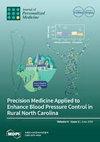优化泌尿外科并发机器人多部位手术:单中心经验与文献综述并列。
摘要
导言:本文将病例系列与系统综述并列,以评估多部位泌尿外科同步机器人手术的可行性、安全性和临床结果,特别是机器人辅助根治性前列腺切除术(RARP)和机器人辅助肾部分切除术(RAPN)治疗同步前列腺癌和肾癌。目的:本研究的目的是通过将机构研究结果与现有文献进行比较,评估泌尿外科同步机器人多部位手术的可行性、安全性和临床结果。材料与方法:我们对 2021 年至 2024 年间进行的 8 例多点同步机器人手术进行了回顾性分析。测量的主要结果是手术时间、失血量和术后并发症。通过检索PubMed、Embase和Cochrane图书馆数据库,对文献进行了系统性回顾,最后一次检索于2024年7月1日进行。如果研究报告的同期机器人手术与该机构进行的手术相符,包括RARP与RAPN、RARP与机器人经腹腹膜前腹股沟疝修补术(RTAPPIHR)以及其他多部位机器人手术,则纳入该研究。偏倚风险采用改良的纽卡斯尔-渥太华量表进行评估。描述性统计用于分析手术时间和失血量,并计算置信区间(CI)以评估精确度。分类变量(包括术后并发症)采用频率和百分比进行总结。异质性采用I2统计量进行评估,其值超过50%表示异质性很大。必要时采用随机效应模型,敏感性分析排除了偏倚风险较高的研究。研究结果我们介绍了在手术中采用的一种独特的对接技术,该技术允许使用相同的端口部位进行无创伤的手术转换。我们的机构病例证明了机器人多部位同时手术的可行性和安全性,平均手术时间为 315 分钟(95% CI:290-340),平均失血量为 300 毫升(95% CI:250-350)。无重大术中并发症报告。这些结果与文献报道一致,文献报道的平均手术时间为 390 至 430 分钟,平均失血量为 200 至 330 毫升。值得注意的是,在我们的病例中没有观察到手术切缘阳性或术后肾功能下降的情况。系统性综述包括九项回顾性研究,涉及 40 例同时进行 RARP 和 RAPN 的病例,以及十一项研究,包括 392 例 RARP 联合 RTAPPIHR 的病例。这些研究结果支持同期手术的可行性和安全性,显示手术时间、失血量和术后并发症的发生率相似。结论并发机器人多部位手术,如RARP联合RAPN或RTAPPIHR,似乎是安全可行的。我们的数据表明,就安全性和并发症发生率而言,这些手术并不比单独手术差。尽管没有进行正式的成本效益分析,但包括缩短手术时间、缩短住院时间和提高资源利用效率在内的潜在优势可能会节省成本。不足之处包括样本量小、回顾性设计以及缺乏长期随访。需要进行前瞻性试验来验证这些研究结果,并进一步完善相关技术。经费:本研究未获得任何外部资助。注册:由于其比较性回顾性质,本综述未在任何公共协议注册处注册。Introduction: This article juxtaposes case series with a systematic review to evaluate the feasibility, safety, and clinical outcomes of concurrent robotic multisite urological surgeries, specifically robot-assisted radical prostatectomy (RARP) and robot-assisted partial nephrectomy (RAPN), for synchronous prostate and kidney cancers. Aim: The aims of this study were to evaluate the feasibility, safety, and clinical outcomes of urological concurrent robotic multisite surgeries through a comparison of institutional findings with the existing literature. Materials and Methods: A retrospective analysis was conducted on eight institutional cases of concurrent robotic multisite surgeries performed between 2021 and 2024. The primary outcomes measured were operative time, blood loss, and postoperative complications. A systematic review of the literature was performed, searching PubMed, Embase, and Cochrane Library databases, with the last search conducted on 1 July 2024. Studies were included if they reported on concurrent robotic surgeries corresponding to the procedures performed at the institution, including RARP with RAPN, RARP with robotic transabdominal preperitoneal inguinal hernia repair (RTAPPIHR), and other multisite robotic surgeries. Risk of bias was assessed using the modified Newcastle-Ottawa Scale. Descriptive statistics were used to analyze operative time and blood loss, with confidence intervals (CIs) calculated to assess precision. Categorical variables, including postoperative complications, were summarized using frequencies and percentages. Heterogeneity was assessed using the I2 statistic, with values above 50% indicating substantial heterogeneity. A random effects model was applied when necessary, and sensitivity analyses excluded studies with high risk of bias. Results: We describe a unique docking technique employed in our procedures, which allows for atraumatic transitions between surgeries using the same port sites. Our institutional cases demonstrated the feasibility and safety of concurrent robotic multisite surgery, with a mean operative time of 315 min (95% CI: 290-340) and mean blood loss of 300 mL (95% CI: 250-350). There were no significant intraoperative complications reported. These findings are consistent with the literature, where mean operative times range from 390 to 430 min and blood loss ranges from 200 to 330 mL. Notably, no positive surgical margins or declines in postoperative renal function were observed in our cases. The systematic review included nine retrospective studies involving 40 cases of concurrent RARP and RAPN, as well as eleven studies including 392 cases of RARP combined with RTAPPIHR. The findings from these studies support the feasibility and safety of concurrent surgeries, showing similar rates of operative time, blood loss, and postoperative complications. Conclusions: Concurrent robotic multisite surgeries, such as RARP combined with RAPN or RTAPPIHR, appear to be safe and feasible. Our data suggest these procedures are non-inferior to separate surgeries in terms of safety and complication rates. Potential benefits, including reduced operative times, shorter hospital stays, and more efficient resource use, may translate into cost savings, although no formal cost-effectiveness analysis was conducted. Limitations include the small sample size, retrospective design, and lack of long-term follow-up. Prospective trials are needed to validate these findings and further refine the techniques. Funding: this review did not receive any external funding. Registration: this review was not registered in any public protocol registry due to its comparative retrospective nature.

 求助内容:
求助内容: 应助结果提醒方式:
应助结果提醒方式:


